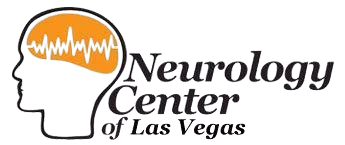PROCEDURES
Please contact Rosa, office manager, for more information.
Nerve Conduction Velocity Study (NCS/EMG)
Nerve Conduction Studies and Electromyography are two separate tests that are usually done one after the other.
Preparation for this procedure:
- No children please.
- Please be on time. If you are more than 10 minutes late, your test may be rescheduled.
- You may eat, drink, and keep your normal schedule until the test.
- If you smoke, please refrain from doing so until after the test.
- Please notify your doctor if you are on blood thinner medications such as Coumadin. Your dosage may need to be adjusted, or the doctor may take you off the medication a few days before the test.
What can I expect?
The technician may ask you to remove your clothes and give you an appropriate robe. This test is a two-part test beginning with the NCS portion. During this time, the technician places some electrodes on the area to be tested. With an instrument, the tech sends a series of electrical shocks through to test the nerves in the area. This usually does not hurt, though it can be uncomfortable. The computer registers how long it takes for electricity to pass between electrodes. This is done to evaluate the nerves.
The second portion of the test is EMG. The doctor does this portion of the test, which involves the insertion of some very fine needles into the muscle to check electrical activity within the muscle. The doctor will ask you to move in different positions to evaluate the muscle. This portion of the test can be painful, but it is usually done very quickly. The NCS and EMG may take from 45-60 minutes. You may resume your daily activities as usual. Please make a follow-up appointment with the doctor to get the results of the test. Results are usually available within a week.
Electroencephalography (EEG)
An electroencephalogram (EEG) is a test that measures and records the electrical activity of your brain. Special sensors (electrodes) are attached to your head and hooked by wires to a computer. The computer records your brain’s electrical activity on the screen or on a paper as wavy lines. Certain conditions, such as seizures, can be seen by the changes in the normal pattern of the brain’s electrical activity. The duration of the test is 45 minutes to an hour.
Preparation Instructions:
It will help us to get an accurate EEG test result if you follow a few instructions before coming in for your EEG test.
- Try to get NO MORE than six (6) hours of sleep the night before your EEG test. It will help if you are sleep deprived.
- You may have a small meal. Before your test, no caffeine (coffee, tea, coke). No natural stimulants like orange juice.
- Take your medications as prescribed but no sedation medications (like Valium or Ativan) are allowed before the test.
- We will be working with your head so come with clean hair; no sprays, gels, or oils in the hair.
- You will need to shampoo afterwards. Hats are suggested.
Ambulatory EEG
Ambulatory EEG (Electroencephalogram) enables the interpreting neurologist to actually look at events along with associated electroencephalographic discharges. The patient then typically goes home with the equipment and goes about usual activities. Any specific events are recorded and then reviewed in detail after the patient is unhooked. Typically, this test is done in patients who are having unrecognized seizures, frequent seizures, or pseudoseizures.
